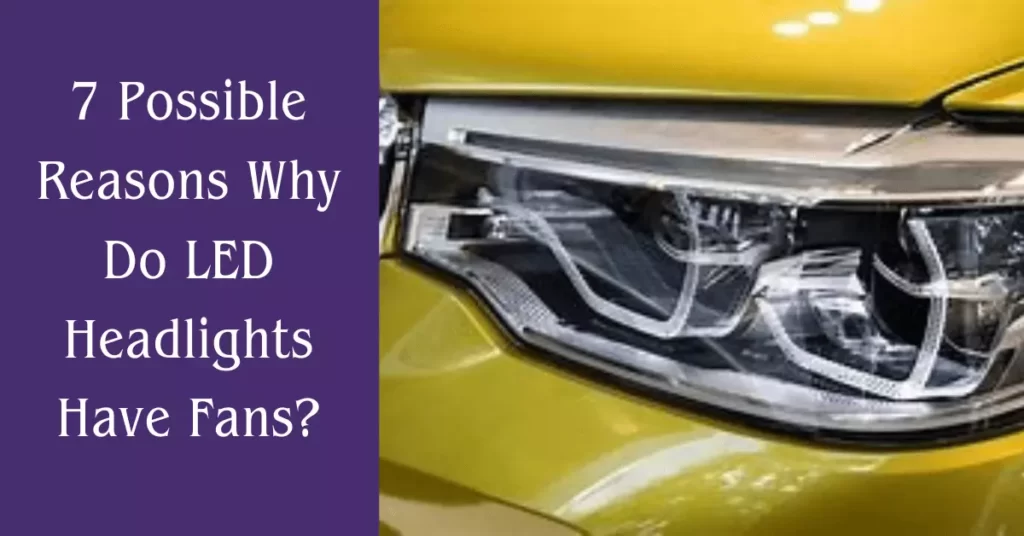
LED headlights have been gaining popularity in the automotive industry. It is because of their superior performance and efficiency. One of the main reasons for their popularity is because they have fans built into them.
This means that these headlights can stay cool. Even when they are used for long periods of time. It makes them perfect for long drives or off-road adventures.
Reasons Why LED headlights have fans?
Headlights with fans use a fan to cool the headlights. They allow them to produce brighter, more efficient light. The fans help to disperse the heat generated by the headlights. They reduce the amount of heat absorbed by the surrounding components.
This helps to extend the life of the headlights. It also reduces the risk of over-heating. The fans can also be used to direct the light output in different directions. It provides better visibility in low light conditions. Following are some reasons that will give the answer of Why do LED Headlights have fans?
1) Fans Helps In Heat Elimination:
Fans in LED headlights help in heat elimination. By drawing air from the back of the headlight. It expels it from the front. This helps to keep the temperature of the headlight components within acceptable levels.
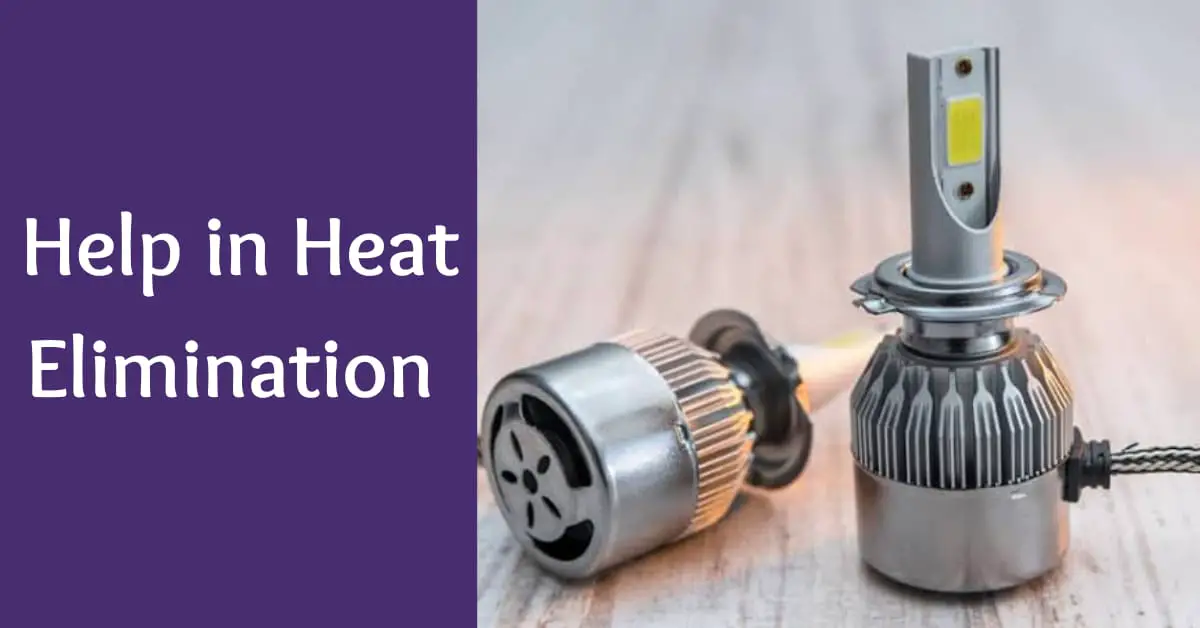
By forcing air through the headlight, it helps to dissipate the heat. It allows them to operate at optimal temperatures. Additionally, fans can also be used to reduce the temperature of the headlight housing. This can help prevent the problem of melting headlight socket shortly.
2) Fast Operation:
LED headlights with fans operate faster than fanless led headlights. Due to the fact that the fan helps to reduce heat. It helps to increase the lifespan of the headlights. It also helps to increase the brightness of the headlights.

The fan increases the air circulation around the LEDs. It helps to increase the working of the headlights. The fan also helps to reduce the strain on the power supply. As it helps to reduce the amount of heat build-up. That can occur due to the power supply being overworked.
3) Sufficient Brightness:
LED headlights with fans possess sufficient brightness. Because the fan is designed to keep the LED light cool. This increases the brightness of the LED headlight. As it is not being affected by the heat of the light being generated. The air circulation also helps to keep the headlight cool. It prevents any reduction in brightness.
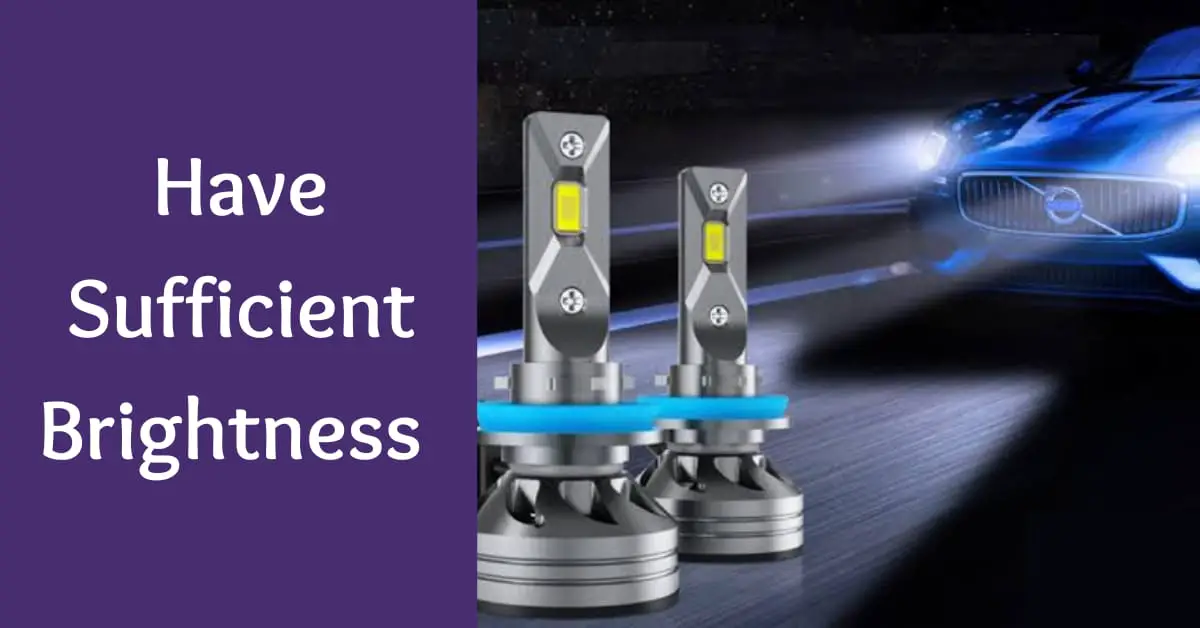
4) Prolong lifespan:
LED headlights are more durable. They have a longer lifespan than traditional halogen headlights. LED headlights with fans possess 50,000 hours lifespan. It uses less energy. It generates less heat, and is more resistant to shock and vibration. This means that LED headlights are less prone to burn outs. They can last up to five times longer than halogen headlights.
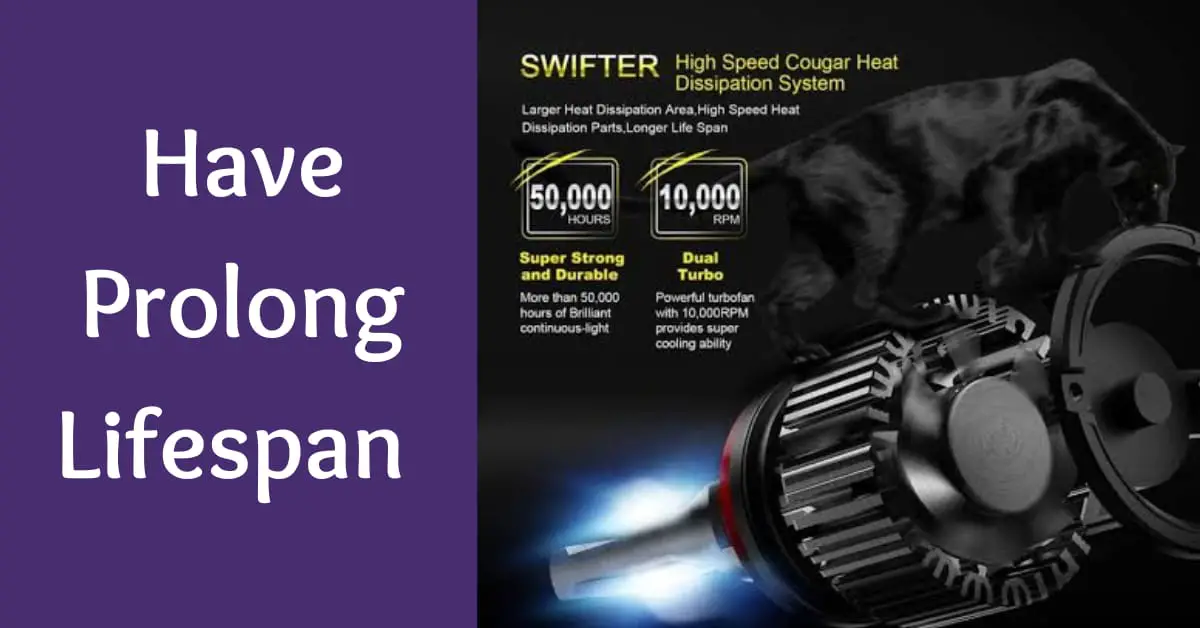
Additionally, LED headlights draw less power from the vehicle’s battery. It reduces the overall strain on the vehicle’s system. This allows the battery to last longer.
5) Moisture prevention:
Another reason of Why do LED headlights have fans is its moisture prevention. LED headlights generate very little heat. Unlike traditional bulbs, which can generate a great deal of heat.

In addition, the fan helps to circulate the air. It allows for the moisture to be dispersed more quickly. Preventing it from accumulating.
However, in case of sufficient moisture, it’s essential to have it dried as soon as possible to avoid any costly damages. You can easily remove moisture from your vehicle headlight without opening it and manage its cleanliness right at home.
6) Active cooling:
LED headlights with fans provide much more efficient cooling. Than traditional headlights. The fans draw in cooler air and circulate it around the LED light bulbs. While also pushing out the hot air. This creates a much more efficient cooling system.
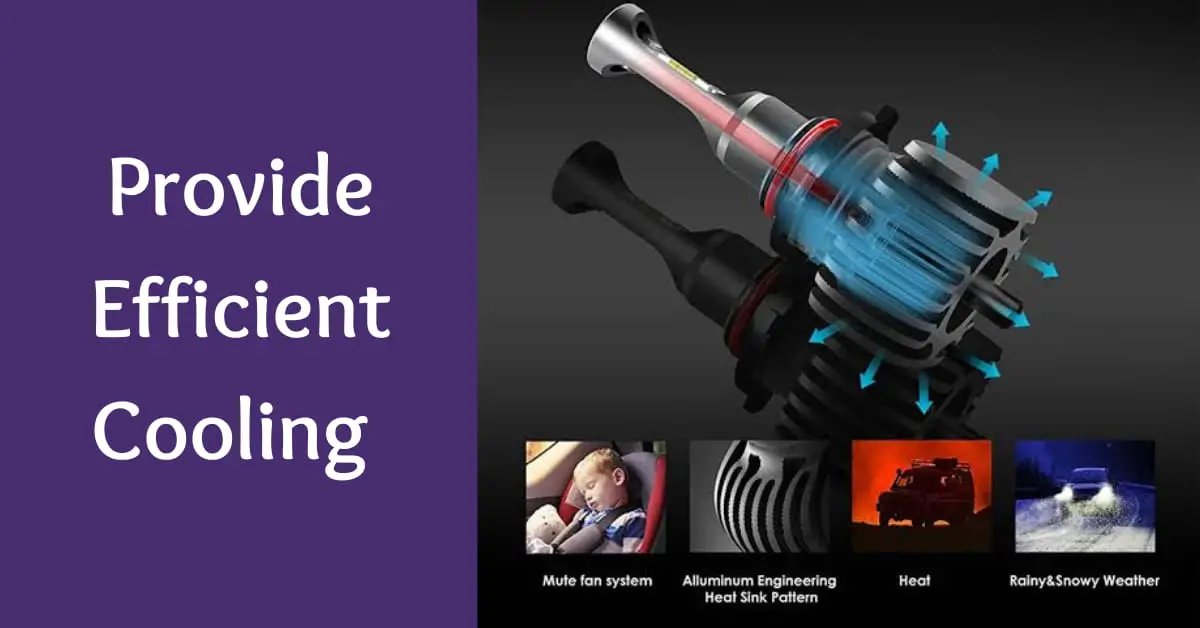
It relies solely on convection to cool the air around the light bulbs. The fans also help to reduce the amount of heat that is generated by the light bulbs.
7) Customizable:
Fan-equipped LED headlights come in a variety of styles and designs. It makes it easy to customize your vehicle’s look and feel.
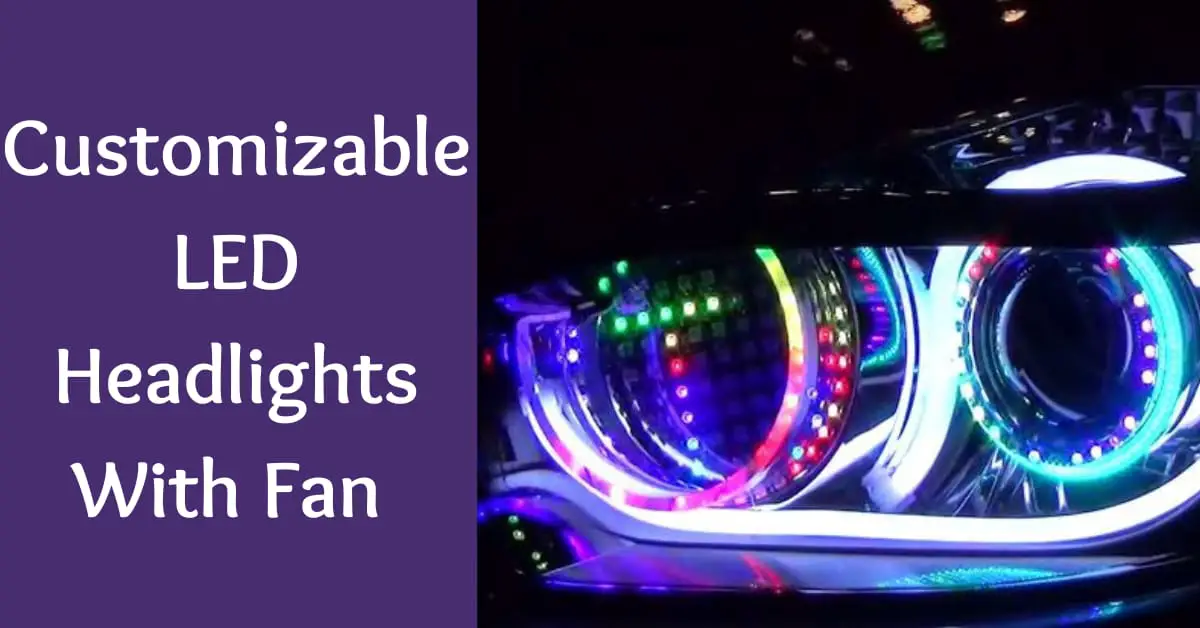
Do you know; rally cars have tape on their headlights! Learn why they do so…
Do Fanless LED Headlights Overheat?
No, fanless LED headlights do not overheat. The LEDs used in these headlights are designed to produce less heat.
Than traditional halogen bulbs, meaning the temperature of the lights is usually lower. The design of the headlight housing is generally more accurate at dissipating any heat.
How Does Heat Affect The Performance Of LED Headlight?
When exposed to extreme temperatures, the performance of LED headlights can be affected drastically. Heat has a direct impact on the electrical components of an LED headlight. It can cause it to malfunction or even stop working altogether.
Without a proper cooling system, led headlights can overheat. They cause damage to the components. This is why it is important to consider installing a cooling fan for your led headlights. To ensure that they stay cool and operate properly.
A cooling fan can help extend the lifespan of your led headlight. By preventing it from overheating and potentially damaging its components.
Pros of LED Headlights with fans
1. Longer life:
LED headlights with fans are known to last longer than traditional headlights. Often lasting up to 50,000 hours or more.
2. Lower energy consumption:
LED headlights are more energy efficient than traditional headlights. It means that they consume less energy. They can be used for a longer period of time before needing to be recharged.
3. Reduced noise:
LED headlights with fans are quieter than traditional headlights. There is no need to worry about headlights making too much noise.
4. Eco-Friendly:
LED headlights are more eco-friendly compared to halogen headlights. Because they use less energy and produce less heat. This reduces greenhouse gas emissions.
Cons of LED Headlights with fan
- They are more expensive than standard fanless LED headlights.
- The fan is a bit loud. It may be a nuisance for some people.
- They can be a bit more complicated to install. As compared to standard headlights.
- They can be more prone to failure. Because of dust and moisture getting into the fan.
- The fan will need to be replaced periodically. As a result, maintenance costs over time.
Designs and Styles of LED Headlights with Fan
Fan-equipped LED headlights are available in a variety of styles and designs. These include single beam, dual beam, projector, and reflector types. They offer several benefits over traditional halogen headlights. It includes improved visibility, longer lifespan, and lower energy consumption.
Fan vs Fanless LED Headlights: Which is best for you?
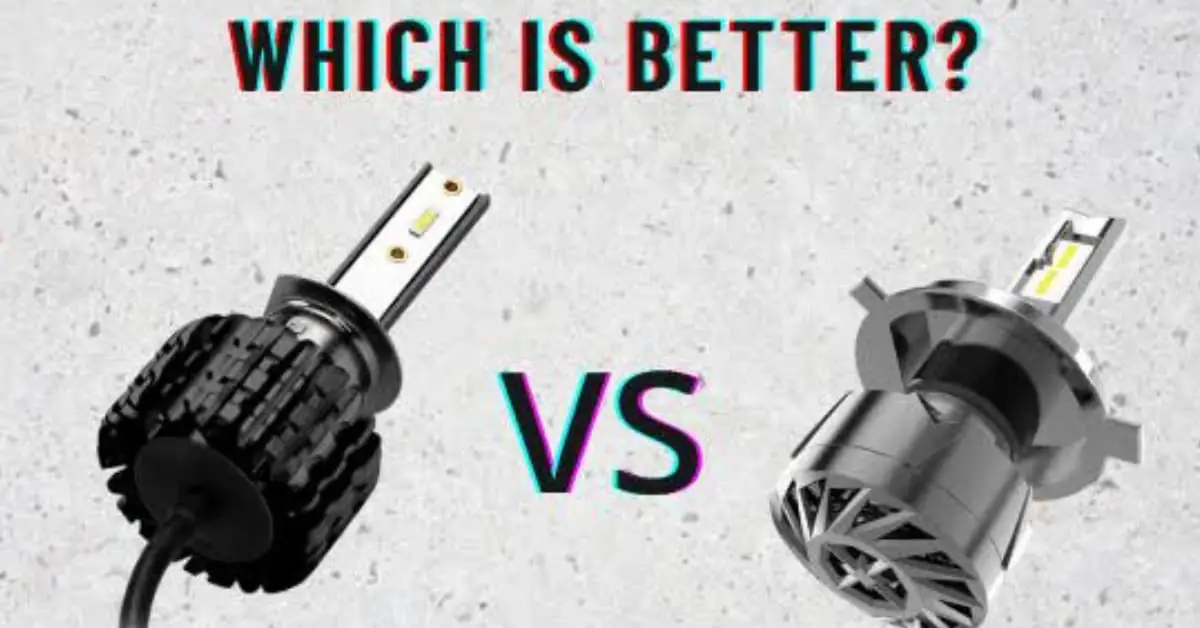
1. Appearance:
The appearance of fan vs fanless LED headlights is generally very similar. As both types of headlights are typically round and slim.
Fanless LED Headlights:
A fanless LED headlight will be completely sealed with no visible fan.
Fan equipped LED Headlights:
While a fan-equipped LED headlight will have a small fan. It will be visible on the outside of the headlight.
2. Power:
Fan equipped LED Headlights:
Fan-equipped LED headlights typically provide a brighter, more focused beam. Than fanless LED headlights. This is because the fan helps to keep the LED bulbs cool. It allows them to produce a brighter light.
Fanless LED Headlights:
Fanless LED headlights do not have the same ability to dissipate heat. As fan-equipped LED headlights. So their light output is typically lower.
However, fanless LED headlights are generally more reliable. As they do not require a fan to function. They are also quieter and require less maintenance. It makes them the preferred option for many drivers.
3. Noise level:
Fan equipped LED Headlights:
The noise level of fan-equipped LED headlights is typically much higher. Than fanless LED headlights. Fan-equipped headlights generally emit a low humming sound.
Fanless LED Headlights:
While fanless headlights are completely silent.
4. Brightness
Fan equipped LED Headlights:
The brightness of fan-based LED headlights is typically greater. Than that of fanless LED headlights. This is because the fan-based LED headlights have an additional cooling system in place. It allows them to produce a brighter light.
Fanless LED Headlights:
Fanless LED headlights typically have a more limited range of brightness. As they do not have the cooling system in place.
FAQs
Do All Led Headlights Have Fans?
No, not all LED headlights have fans. Some LED headlights are designed to be fanless. They are designed to stay cool without the need for a fan.
Things to do if Led Headlight Fan Not Working?
- Check the power connection to the headlight fan. Make sure that the power cord is securely plugged in. Check that the power switch is on.
- Inspect the headlight fan for signs of damage. Check for any loose or broken wires. Also look for any signs of corrosion or rust.
- Check the fuse on the headlight fan if it is damaged or blown. Then replace it with a new one of the same amperage rating.
- Replace the headlight fan if it is still not working. Make sure to purchase a compatible fan. To ensure that it works properly.
- Contact the manufacturer if the headlight fan is still not working. They may be able to provide troubleshooting advice. Or send out a replacement part.
How Hot Do LED Headlights Get?
LED headlights typically do not get as hot as halogen headlights. The maximum temperature of a typical LED headlight is usually in the range of 100-140°F (37-60°C). Learn more with this experimet;
